People like unique things. However, when you present them with a hairless cat, they may start to squirm. You can’t deny these felines have an interesting appearance. But that unique charm doesn’t appeal to everyone. On the other hand, hairless cat breeds have their adoring fans. If you love these exotic felines, you know they’re special. Most owners of the hairless set often believe their naked kitties come with enhanced intelligence. (No alien jokes, please) Whether you can’t wait to snuggle with those wrinkles or hesitate to approach the thin layer of peach fuzz, we have all the information on hairless cat breeds you need.
Hairless – NOT Hypoallergenic
Contrary to popular belief, hairless cat breeds aren’t hypoallergenic. True, they don’t shed very much. However, they still produce saliva. And what lives in cat saliva? Fel D1. Fel D1 is the protein in dander and saliva that triggers allergic reactions to cats. Hairless cats don’t produce as MUCH Fel D1 as other cat breeds, but it’s still present. And even though they may only sport some peach fuzz here and there, they like to groom themselves. So if you have a known cat allergy, you’ll need to ask yourself if you think the lower risk is worth it.
It’s similar to the compromise owners make with hairless dogs. They continue to produce dander but in smaller amounts. There are no 100% hypoallergenic pets, unhappily. (Well, maybe fish)
Hairless Cat Breeds and Grooming
Okay, so you don’t need to break out the cat brush every day. However, you’re not going to get away with no grooming concerns when you decide to bring home a hairless cat. Even if your particular feline is completely bald, you have many grooming concerns to keep in mind. Perhaps more than you would for a cat with a fluffy coat.
That naked skin? It requires A LOT of special attention!
Baths
Most of the time, you wouldn’t think about plopping your cat in the bath. But hairless cat breeds NEED a weekly bath. Because they’re missing hair, the natural oils produced by the skin have nowhere to go. This means a sticky build-up. Without a regular cleaning regime, skin problems can develop. (Imagine if you didn’t bathe for a week. Gross, right?)
So you need to perform a spa ritual to remove those oils and leave that naked skin clean and healthy. Between baths, you may also need to reach for cat wipes if your feline is particularly oily.
And the cleaning doesn’t stop there! The lack of hair can extend to your kitty’s eyes. Some hairless breeds don’t have eyelashes. That means nothing to protect against dirt and debris entering the eyes. You don’t want infection, so you’ll need eye wipes or a damp cloth to keep those gorgeous almond eyes looking their best.
Outdoor Protection
Realistically, hairless cats should stay indoors. Sun and naked skin? NOT a good combination. If you decide to take your bald kitty on adventures, you’ll need to chat with your veterinarian about a cat-safe sunscreen. And since your kiddo is completely naked, you need to cover their ENTIRE body. Sunburns are ALWAYS a bad thing. You want to maximize shade and minimize the hours under the sun.
Unique Hairless Cat Breed Needs
Hairless cat breeds not only look exotic and interesting, but they also have a couple of particular needs you won’t see in other felines. Sure, you can come up with one that seems fairly obvious, but the other? It probably doesn’t occur to you.
“It’s Cold Outside”
When you lack a nice fur coat, you also lack the ability to stay warm when the temperature falls. Hairless cats are heat-seeking missiles. They need blankets, cozy beds, and (occasionally) toasty sweaters. You CAN’T conserve the heating bills in the house when you have one of these felines around. Some people think these cats are affectionate when they crawl in a lap (they ARE usually demanding attention), but the truth is they’re sucking up your body heat. You’ll want to crank up the thermostat, move their beds away from drafts, and pile on the fleece.
Metabolism
Hand-in-hand with the need to stay warm goes the infamous hairless cat metabolism. These cats are POWERHOUSES! Their bodies need extra calories to stay warm with no fur. This means you’ll end up feeding them MORE than you would another breed of the same size that sports fur. You don’t want to OVERFEED them, though. A fat naked cat isn’t attractive (or healthy). Look for the best cat foods – wet and dry – to keep your little eating machine working in peak condition. You’ll go a long way to keeping them warm from the inside.
Hairless Cat Breeds
The International Cat Association (TICA) and the Cat Fanciers’ Association (CFA) recognize three hairless cat breeds. From those three, additional crosses have appeared. They’re not official yet, but they’ve drawn admirers. Each cat comes with specific characteristics, as well as a few health quirks.
If you’ve lost your heart to these wrinkly darlings, make sure you do your homework. Talk with the breeder before you decide to bring one home. And expect to get quizzed in return. After all, these naked darlings require A LOT of work. Breeders want to make sure their kitties are going to a good home. If you don’t get a lengthy interrogation, you should feel suspicious. You may be getting a kitten from a kitten mill.
Donskoy
In 1987, Elena Kovaleva rescued a little kitten from some boys. She named the kitten Varvara and brought her home. To Elena’s shock, all of Varvara’s hair fell out! Then Varvara gave birth to a little of kittens – and THEIR hair fell out! Everyone received full vet checks, but nothing showed up. Nope, they were simply a brand new breed: the Donskoy. Donskoy’s combine the Siamese and Peterbald’s best traits, with more wrinkles than you see in the Sphynx. They’re muscular, and they have webbed toes! You get a very people-oriented cat with a high level of intelligence that makes them easy to train. And, unlike other hairless cat breeds, they CAN grow a winter coat they’ll shed in the spring. You’ll also find four coat types in the Donskoy:
- Brush: Some hair’s present, but bald spots happen.
- Flocked: They appear hairless but feel like velvet. Eventually, they can turn bald.
- Rubber Bald: They’re born bald.
- Velour: They have a bald spot on the head, but they retain hair elsewhere.
Peterbald
The Peterbald combines some of the best Siamese traits in a hairless body. This hairless cat breed IS a cross – a combination of the Sphynx and Oriental Shorthair. However, TICA recognized them as a separate breed in 2005. Some kittens ARE born with hair, while others pop up naked. It’s that old genetic mutation rearing its head, though the hairless condition is dominant (which is opposite to the Sphynx). They’re darlings with people-oriented personalities. Many meet you at the door with a friendly chirp, and they like to trail behind you – just in case you need assistance. They’re brilliant. You see a more delicate skeleton in the Peterbald than the Sphynx (good thing they’re smart!).
Sphynx
One of the most expensive cat breeds out there; people instantly recognize the Sphynx. And it’s always hysterical to recall that this exotic hairless cat breed started in the 1960s in CANADA! A natural genetic mutation produces the hairless condition (not that the kittens probably appreciated the Canadian weather). They CAN have a downy fur in addition to the naked state, making them feel like peach fuzz. They ARE Velcro-Kitties, requiring your undivided attention at all times. And they have a LOUD vocabulary, so don’t think you’ll get away with ignoring them. They’re also athletic and people-oriented, even tolerating the occasional pup in the house. Unfortunately, they’re known for hypertrophic cardiomyopathy. You and your vet will need to listen closely for any sounds of a murmur.
Mixed Hairless Cat Breeds
What’s better than a hairless cat breed? How about a mixed hairless cat? Once the naked craze took off, cat breeders decided to blend that bald trait with a few other unique features. The resulting cats have swept the feline world like wildfire. You get those big personalities with additional adorable traits that make them stand out even more. And while they’re not yet recognized by TICA or CFA, they still have big followings in the cat world.
Bambino
The Bambino is one of the newer hairless kitties to hit the scene, showing up in 2005. The cats come from crossing the Munchkin and Sphynx breeds together. The result? A hairless cat breed running around on short legs! They’re a dwarf breed, and they usually weigh around 5-9 pounds. They adore families, and they’ll even hang out with your dog without a problem. They DO have the Sphynx trait of wanting attention, but it’s tempered a bit with the Munchkin side. (So they aren’t quite Velcro-Kitties) Currently, TICA lists them as an Experimental Breed.
Elf
What happens when you mix a Sphynx and an American Curl? You get an Elf! This hairless cat has ears that curl backward. (Which, as you can guess, is where they got their name) They have the affectionate and social personality of the American Curl, blended with the mischief, curiosity, and intelligence of the Sphynx. It’s a dynamic mixture that owners love. And adding that touch of American Curl helps cut down on the notorious Sphynx heart issues a touch (only a touch, though – make sure you have a good relationship with your vet). Currently, Elves can show under the Sphynx breed as a “Special Trait.”
Dwelf
The Dwelf is another new hairless cat breed. In this case, breeds combined the Elf and the Munchkin. You get those adorable curved ears, no hair, and tiny legs. They have playful personalities, to the point some owners feel they’re almost “dog-like.” (Don’t let any cats hear you say that) They’re extremely loving, courtesy of the American Curl and Munchkin in their genes. Unhappily, they’re also prone to some health conditions. You’ll want to keep an eye on their heart and make sure you ONLY get your Dwelf from a reputable breeder with the American Curl in that mix!
Minskin
Munchkins produce the cutest crosses, and the Minskin is no exception. They’re the result of a Muchkin and a Sphynx – then a touch of Devon Rex and Burmese. So you get an adorable naked shorty with a coat on the head, tail, and legs. It’s definitely unique! Their tummies remain naked, so their coats assume a “pointed” appearance. They have the big, outgoing personality you’d expect from the crew in their genetic code. (Not to mention that little guys always have big dreams) And nothing makes them happier than snuggling with you while you go about your day.
Ukrainian Levkoy
As you might guess from their name, the Ukrainian Levkoy started in Ukraine in the early 2000s. They’re popular throughout Russia, as well. They result from crossing the Scottish Fold and the Donskoy. So instead of a hairless cat breed with ears curling backward, they fold IN! You also get an interesting bonus of sexual dimorphism. The males grow MUCH larger than females. They have a friendly demeanor, and they’re extremely playful – something you’ll see in both of the breeds that make up their genetic code. They tolerate everyone in the household, even the canines. Unhappily, their newness means it could take some time for them to appear in the United States.
Getting Naked
Hairless cat breeds aren’t everyone’s cup of tea. Some people think they’re adorable, and other people think they look otherworldly (not in a good way). But whether you find them strange or enchanting, they have some unique characteristics. And, really, the more you delve into their biology and anatomy – or the more pictures you look through – the more fascinating they become.
So ditch the fur! It’s time to embrace the naked cat trend!

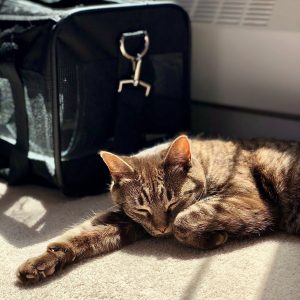
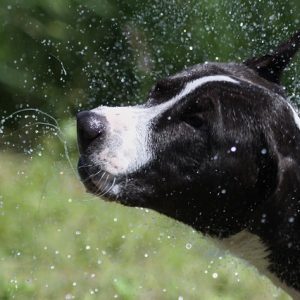
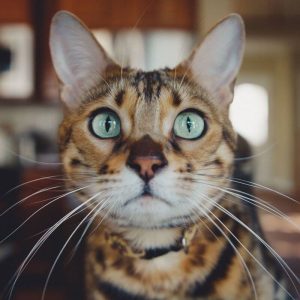
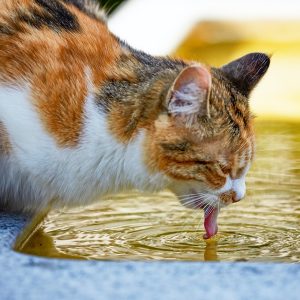
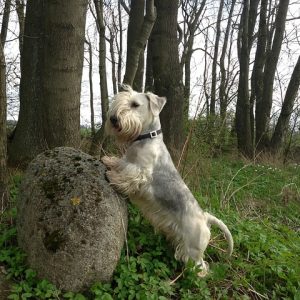

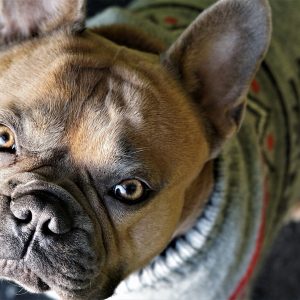
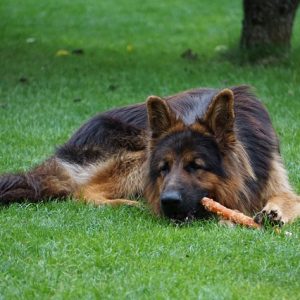
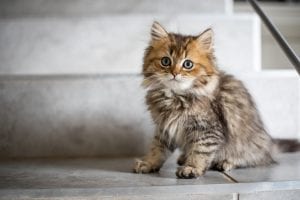


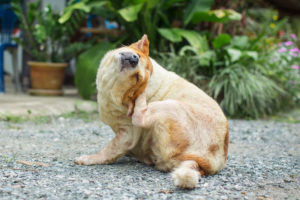
No comment yet, add your voice below!